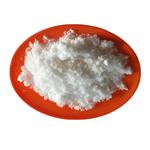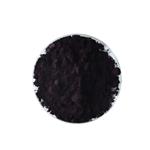Chemical Properties
Grey powder. Structure: Flat C layers as in graphite, with F atoms bonded
above and below the C layers. The composition lies within the range C
3.6F to C
4F. The color
of the preparation is velvety black, sometimes somewhat bluish,
d (under xylene) 2.05-2.09. Resistivity 2-4 ohm ? cm. at 750 kg/cm
2. Stable to acids, bases and the common organic reagents. Slowly
decomposes when heated for a long period above 100°C. Deflagrates
when rapidly heated over a flame, forming sootlike flakes.
Uses
Graphite Fluoride is used in cathodic materials, lubricants, image recording, pressure-sensitive copying and carbon filament incandescent lamps.
Definition
ChEBI: Fluoromethane is a member of the class of fluoromethanes that is methane in which a single hydrogen is substituted by a fluorine atom. It has a role as a refrigerant. It is a member of fluoromethanes, a fluorohydrocarbon and a member of methyl halides.
Preparation
Prepared by fluorination of graphite at room temperature in
the presence of HF. A stream of F3 at 4-5 liters/hr. is passed through a copper
wash flask held at 0°C and filled with anhydrous HF, and then
through an attached Cu tube (about 2 cm. in diameter). A Cu boat
containing a thin layer of about 1 g. of graphite is placed in the
tube. The end of the tube is closed with a screw-on cap having
a narrow opening. The reaction is finished after one or two hours, as shown by the constant weight of the product. To remove excess
HF, the preparation is washed with dilute base, water and alcohol
and dried to room temperature over soda-lime. The yield is
quantitative.




